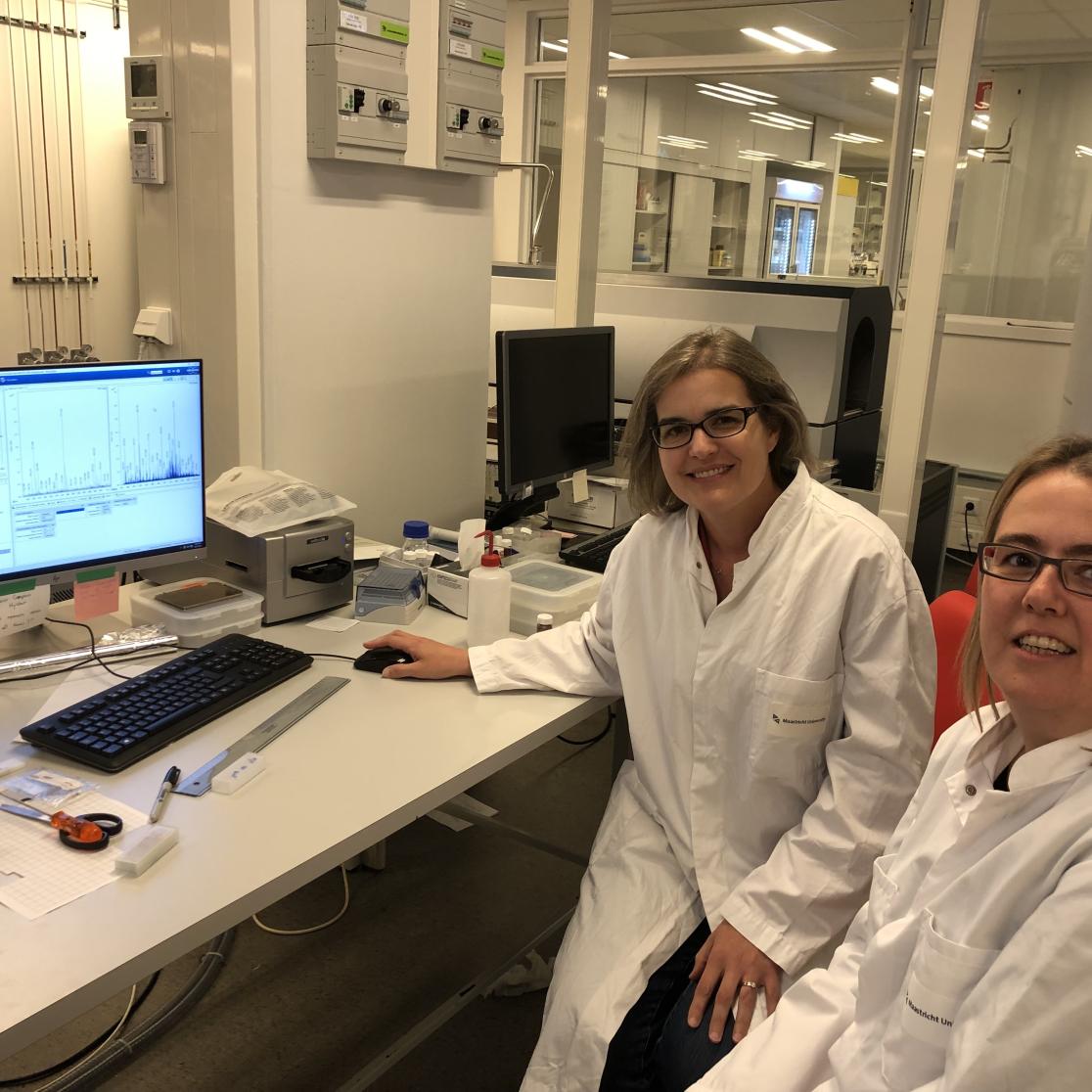Amanda Hummon on a mission: personalized treatment for cancer patients
Amanda Hummon is a Professor of Chemistry and Biochemistry at the Ohio State University in the United States where she also has a research program in chemistry and biochemistry. Her research program focuses on cancer biology to find improved treatment options for patients. Amanda is a recipient of Fullbright Scholar Award and is a visiting professor at Maastricht MultiModal Molecular Imaging Institute (M4I) at Maastricht University. Here she gives us an inside look at her career in cancer research along with her colleague, Eva Cuypers who is an assistant professor Assistant Imaging Mass Spectrometry in Peri-Operative Diagnostics (M4I).
What drives you in your research?
“The most important is, pick a problem that you believe heavily on. This also goes with everything you do in your life, if you believe in what you do then you automatically work hard without thinking twice.”
What do you value about your time in Maastricht?
“The Dutch hospitality is like no other. They are so welcoming and if any issues arise, then they are straight to the point. I wish I could be like this with my students back home but that will not work out because they are not used to being that direct. I also value that the lab is specifically designed for patients and scientists. There are not many research labs where you, as a scientist, interact directly with patients and surgeons on a regular basis. The integrated model allows you to combine practical with scientific work.”
What are you aiming for with your research?
“The major goal is to find a way for imaging cells where we first look at the cells and develop an approach that can be adapted to the more complicated organoids. This way patients can get a personalized service. Currently, every patient gets the same treatment regardless of the type of cancer they have. With this research, the surgeons are able to assess every cancer cell separately thereby helping the patients faster and more effectively.
In the long term, we would like to provide personalized medicine for patients, meaning that doctors can give personal advice on what drug is working best for their tumor/organoid. Eva worked for 2 years to get the method where we can look at a single cancer cell. We are using the Mass Spectrometry Imaging (MSI) technique. The M4I at Maastricht University are the leading experts in the world at this technique, which allows you to develop chemical maps of tissues and cells. The method that was being used prior to this technique depended heavily on the person analyzing the cell which can lead to human error. But in the long term, we are aiming to develop an instrument that will analyze the cells, so it is less sensitive to error and saves a lot of time. There is also the opportunity to put the mass spectrometer next to the surgery room so that surgeons have a direct response to see if all the tumor cells are removed from the patient.”
What kind of data is extracted by the mass spectrometer we have in Maastricht?
“The spectrometer we are using is a Matrix-Assisted Laser Desorption/Ionization with Ion Mobility and a Time of Flight Mass Analyzer. This equipment is faster and gives more sensitive data while also being able to look at one specific cell through the mass spectrometry (MS) technique. Most of the equipment in the world are only able to look at a group of cells while this machine gives you greater insight into cell proteins which can help with developing more effective treatments for cancer.”
Amanda was joined by her fellow researcher, Eva Cuypers, who she worked closely with during her time in Maastricht. We asked Eva for her insights about her time with Amanda in the past months.
What is the value of Amanda doing a part of her research here?
Eva: “I learnt a lot about her working culture. Together we could brainstorm ideas and combine our knowledge to work much faster and efficiently. I like the way she looks at things scientifically, which is a different view than what I am used to. I also admire how she runs her labs and how she successfully manages all her projects, all while having personal connections with her students. She has motivated me in many ways with Mass Spectrometry Imaging (MSI) and I will continue to keep working on the research. Thanks to zoom, we can still have our weekly calls and now it is much easier, and we will move faster after her help here.”
This is a beautiful example of the international character of research and the need for these international research exchange programs.
